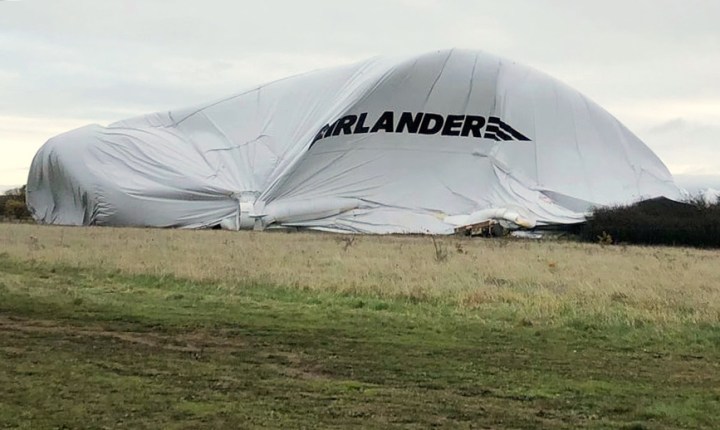
It’s the second disaster to hit the enormous Airlander 10 — also known as “the Flying Bum” for its butt-shaped leading end — in the space of 15 months.
The 92-meter-long (302 feet) flying machine came loose from its mooring at an airfield in Bedfordshire, about 40 miles north of London, England, on Saturday morning. Shortly after coming free, a safety mechanism automatically ripped open the hull to rapidly deflate the aircraft, causing it to collapse and return quickly to terra firma, the company said.
The Airlander’s manufacturer, Hybrid Air Vehicles (HAV), confirmed in a message on Facebook that the aircraft was not in use when the incident took place, adding that it’s now trying to determine what exactly went wrong.
Lifted by helium and powered by four turbocharged diesel engines for a top speed of 90 mph, the the part-airplane, part-airship is capable of reaching heights of 4,900 meters (16,000 feet) and can stay airborne for as long as two weeks. At least, that’s when everything goes to plan. On Saturday, November 18, something went seriously wrong.
“The aircraft is now deflated and secure on the edge of the airfield,” HAV confirmed, adding that the fuel and helium inside the Airlander “have been made safe.”
It said that one person was injured during the incident, while another needed hospital treatment after an accident while dealing with the aftermath.
“We are testing a brand new type of aircraft and incidents of this nature can occur during this phase of development,” HAV said. “We will assess the cause of the incident and the extent of repairs needed to the aircraft in the next few weeks.”
The Airlander is capable of carrying cargo of up to 10 tons, though design modifications could see that increase to 50 tons. And with its ability to land on not only solid ground, but also water, desert, and ice, the Airlander could fulfill a range of roles — including research, surveillance, cargo transportation, and passenger trips — pretty much anywhere on the planet.
The day before Saturday’s accident, the Airlander completed its sixth test flight since August 2016.
Editors' Recommendations
- Korean Air first carrier to use drone swarms for aircraft inspection
- Assembly of world’s largest nuclear fusion reactor begins



